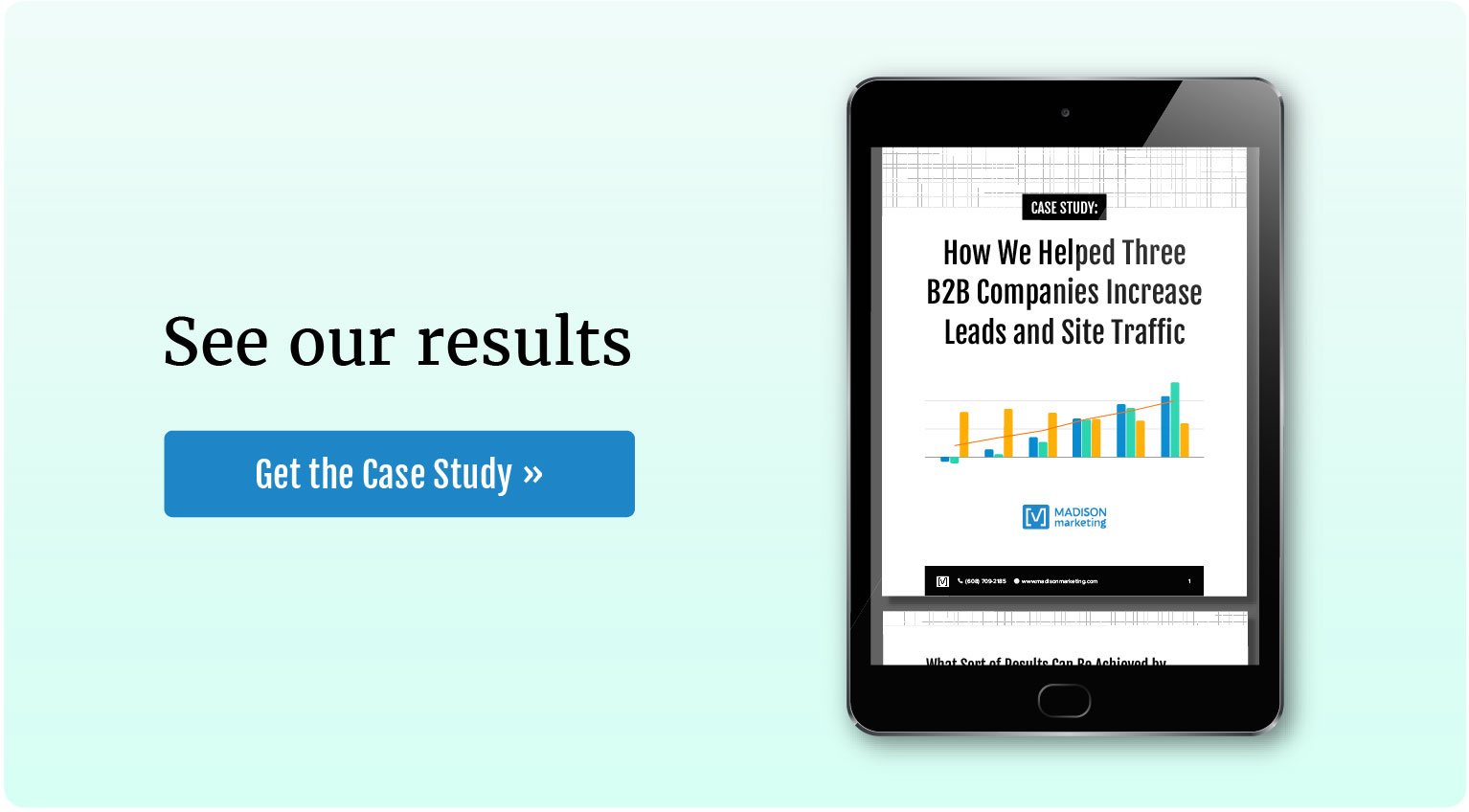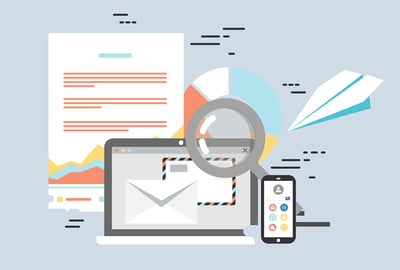In just a few minutes, this guide will walk you through a few best practices, strategies, and tactics for effective B2B lead nurturing in 2024.
Based on our firsthand observations in building lead nurturing programs, we've identified five key areas you can focus on to improve your lead nurturing efforts. Whether you want to refine your approach to managing leads, diversify your communication channels, or better understand lead intent, this guide has you covered.
1. Manually attack the who, how, and why leads turned from MQLs into SQLs and pipeline
It’s easy to treat all leads who aren’t sales-ready the same way once they enter the pipeline, encouraging them en masse to move closer to a purchase.
But the truth is that leads enter the pipeline at different stages of their individual buyer’s journeys, from different sources, for different reasons.
That’s why it’s much more effective to segment leads according to these factors if you have the tools, time, and resources to do so. After all, if someone has their wallet in their lap itching to buy, you wouldn’t want to send them a high-funnel guide to read.
This one-size-fits-all approach runs the risk of confusing leads and sending them unwanted and irrelevant emails.
Instead, it would be more appropriate to send a low-funnel prospect content that’s tailored to their lifecycle stage, like a case study that demonstrates the effectiveness of your solution. This can further persuade them to choose you as their vendor.
Here’s an example. Say somebody just came in through a general interest white paper. An ideal lead nurturing sequence for this person might look like:
- Acknowledging their download
- Acknowledging the symptoms that probably triggered the download
- Recapping some of the main points from the paper in case they only skimmed it
- Naturally segueing into how the company enacts the practices discussed in the paper
- Providing additional resources to help them articulate or self-diagnose their problem and flesh out a solution
Unless a lead shuts the door to further communication, it should remain open. It’s worth contemplating how many different ways you can follow up in a consistent, respectful way to lead them down the funnel.
After leads from different segments actively talk to sales and fail to convert, lead nurturing sequences can become streams of helpful resources that provide value while keeping the door open should they wish to re-engage.
2. Don’t only rely on email
Email, in practice, is pretty inefficient at getting prospects’ attention. Think about every channel instead of defaulting only to email.
One of the fundamental challenges of lead nurturing is that the linear highways to purchase marketers lay down are rarely taken. Instead, the buyers' journeys of prospects look more like a botanical garden: a network of interconnected paths that can be walked in any order.
Someone might grab up all of the case studies featured on your website, sit on them for weeks, go back to read some blog posts, and then wait again before calling for a demo.
So it’s important to acknowledge that many, if not most leads won’t be nurtured the way you plan. The idea is to provide as many logical touch points as you can. That’s why it’s smart to “think outside the inbox” when it comes to lead nurturing.
Sending emails alone may train some of your leads to ignore them—preventing your messages from getting to a segment of those you nurture.
One simple strategy is to use retargeting ads in conjunction with an email sequence. Another is adding LinkedIn as a touchpoint.
No, that’s not just a connection request. It’s value-driven. It’s looking at what a person put their hand up for and giving them an asset you know they’d find valuable with a more personal touch.
If their actions signal they’re dealing with a specific problem, LinkedIn is a place where you can hand them a resource that shows them how to solve it.
Think about it: These days, so few connection requests are at all thoughtful that the bar for personalization is extremely low.
3. Break your lead nurturing sequences down by intent
People enter your funnel through all kinds of front doors. Contextualize your nurturing accordingly.
Build a unified campaign within your nurture sequence based on the intent they’ve signaled through their actions. Take your best guess:
- Are they interested in the “solution” category and haven’t gotten to narrowing down vendors? If so, the best way to nurture that lead may be to put as much objective information in front of them as they need to start that process. Providing that information can build trust which can help them become more motivated to start that process and increase the likelihood you’ll be on their shortlist.
- Example: they’ve read some of your “how-to” or educational content intended to help visitors explore potential solutions.
- Are they already comparing vendors? If so, the best way to nurture them may be to proactively address the questions you know prospects ask when whittling their shortlist to a final winner. Work with sales to ensure you’re helping them achieve their goals and providing value to the lead.
- Example: they’ve viewed some of your service pages and pages with social proof such as testimonials, case studies, or work, suggesting they are measuring your services up against competitors.
- Are they passively interested in your content and want to get your newsletters? If so, the best place to start nurturing is further up the funnel—simply packaging up your best, most popular, or most relevant content and putting it in front of them to consume.
- Example: they’ve signed up for a newsletter or to receive blog updates.
4. Don’t gate again—and bring in third-party content
Here are a couple lead nurturing don’ts that might not be immediately obvious.
Request contact information only once
The first has to do with gathering contact information. After a lead has filled out a form to request a resource, you have all the information you need about them.
So don’t make them fill out another form to access future content you send to them. Instead, link directly to the document. This prevents undue frustration.
Don’t be afraid to share third-party content
There are certainly situations where you wouldn’t want to link to an outside site, such as a competitor. But unless you’re stealing and republishing content, it’s actually perfectly fine to include third-party content in your lead nurturing activities.
For example, prospects may be delighted to receive quick summaries of online articles from trusted industry publications along with links to the full articles in your monthly e-newsletter.
5. Think clearly about “how often” and “how many times”
The internet is awash with opinions about how often to follow up with leads, but the truth is that finding the right frequency requires experimenting with your audience until you hit on something it likes.
Here is what this might look like, based on our experience:
For a more transactional situation:
- An immediate auto-response to deliver an asset (such as a case study) or something similar.
For less transactional situations:
- One initial email about a day after the action.
- To start out, try emailing once per week. You might find it beneficial to send emails even less frequently to avoid unsubscribes, especially if your customers’ sales cycle is long. Keep an eye on your email churn analytics.
- Experiment with different days of the week and times. This gives everyone a chance to be highly available in case the same day and time is not when they’re opening email.
- Then layer sales development representative (SDR) and/or business development (BDR) outreach on top of it. Here are a few approaches to include in this outreach:
- Initial outreach: If a prospect downloads a resource or fills out a form on your website, an immediate auto-response with the requested asset or a thank you message should be sent. Within a day or two, send a personalized email introducing yourself (or the SDR/BDR), mentioning the resource they downloaded or the action they took, and offering further assistance or resources.
- Weekly outreach: After a few nurturing emails that provide informational value, have the SDR/BDR send a personalized message offering to discuss how your services can specifically benefit them. This should feel like a natural progression from the content they’ve been receiving. After a few touches on a given topic, shift the focus to another area they might find interesting. This keeps the content fresh and relevant. If, after six months, the prospect hasn’t shown significant engagement, transfer them to a cold sequence with less frequent, more general outreach that keeps the door open for future engagement.
- Shoot for about five emails on a given topic or focus, and then graduate them to something new based on who they are or what they’ve shown interest in.
- After six months, transfer to a cold sequence. Cold sequences are a series of automated emails that target people who haven’t signaled active interest in your company, but might be a good fit. They’re often used to reach out to companies who might be interested in your services who haven’t previously made contact with you, but including leads that have engaged but have gone “cold” or disengaged with you is another application.
Some companies may decide that after a certain period of time without meaningful engagement, someone should simply be removed from nurturing. But in our anecdotal experience, and some data out there, it’s not uncommon for someone who’s been unresponsive for several years to one day get an email at the perfect time—and close the deal in record time.
Final thoughts
Lead nurturing, while challenging, can be worthwhile when you’re able to demonstrably increase lead generation as a result. Understanding how to segment leads, providing the right resources at the right time, and automating whenever it makes sense can help you do this more effectively and reduce headaches for your sales team.
Interested in nurturing more leads for your B2B?
Topics: Lead Generation






